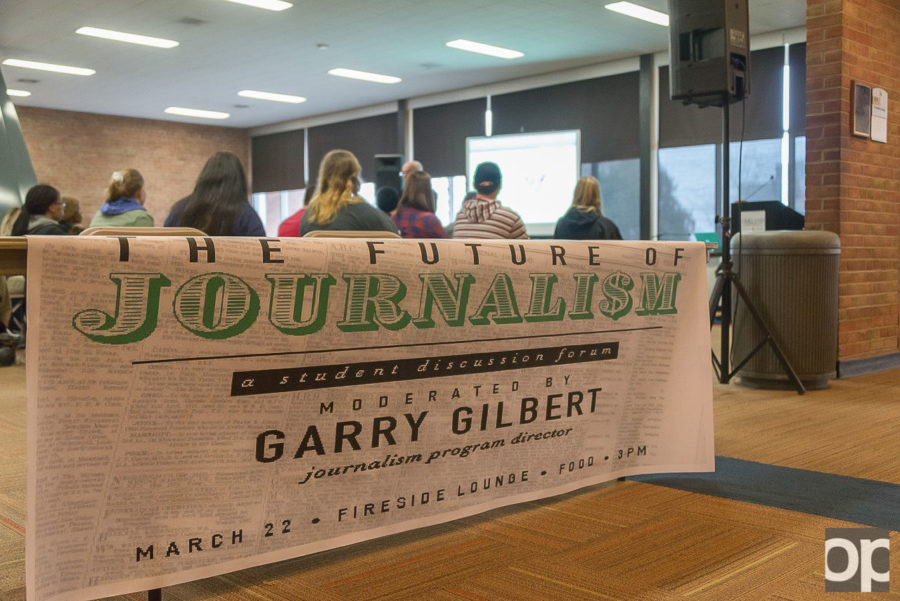Panel creates open dialogue on the future of journalism
Students joined Journalism Director Garry Gilbert in the Fireside Lounge for a panel on “The Future of Journalism” on Tuesday, March 22.
On March 22, members of Professor Garry Gilbert’s Media and Ethics class along with a number of other individuals in the communication and journalism department were invited to “The Future of Journalism” panel in Fireside Lounge.
The event served as a student discussion forum focused on the topic of the funding of future journalism in the digital age. Gilbert served as the moderator for the discussion and provided insight on the topic related to his areas of expertise.
“Many people are predicting the death of print journalism, but I’m not one of those people,” Garry Gilbert, director of the Oakland University journalism program, said. “It’s not necessarily the death of the industry, but rather the death of its funding system.”
Throughout the event, students voiced their opinions regarding their ideas on how journalism should be funded in the future. Some suggested that those in the industry should adopt funding models similar to BBC and other foreign media companies.
Students also offered a variety of solutions to funding problems. Some of these involved the implementation of a verification system that is similar to the verified Twitter user model.
Student Zach Micklea suggested the idea of a color-coded “check mark system” which would serve as a method of informing users which journalists, celebrities, athletes and others are considered to be verified sources in their respective fields.
From here, there was talk surrounding the growth of the digital subscription model and its great potential to bring about change in the funding of the industry.
According to the American Press Institute, 78 percent of US newspapers that circulate their publications online to over 50,000 individuals are using digital subscription models.
When presented with this and other statistics, those in attendance considered the question of whether or not digital subscriptions would be effective in capturing consumers when they can find the information elsewhere at no cost.
“With the decrease in the number of future print publications, we need to focus on the power of smartphones and other devices as our connection to the latest news,” Gilbert said. “There are many types of digital subscription models which may work for funding the industry, but regardless of the solution, it must be industry-wide.”
There were a variety of options discussed throughout the presentation, some of which included the NPR model, where 25 percent of listeners make donations that ultimately cover the other 75 percent.
The paywall method was also discussed. This would provide readers with a certain number of free articles before seeking payment either through marketing research survey questions or a monthly charge for content.
“Overall, I think the event was a success,” Gilbert said. “This class event was held to provide students in this field with an opportunity to think about where journalism is heading and how it will be funded. There are 180 students in this major and events like these are what allow them to get an idea of what the future of the industry will look like for them.”
For more information on the communication and journalism department and how to become involved with more events like “The Future of Journalism,” look for OU COM & JRN on Facebook.







Dave Layton • Jun 6, 2018 at 7:09 PM
More Media People ! More Media People !
Thomas Payne • Jan 15, 2018 at 6:05 PM
Let us all have some common sense.
Harriet Beecher Stowe • Nov 20, 2017 at 6:29 PM
Amen Joshua !
Joshua Lawrence Chamberlain • Nov 5, 2017 at 9:41 PM
I might buy an ad to support the noble cause
Dave Layton • Oct 23, 2017 at 8:03 PM
Buy advertisements ! Get them presses rolling again !